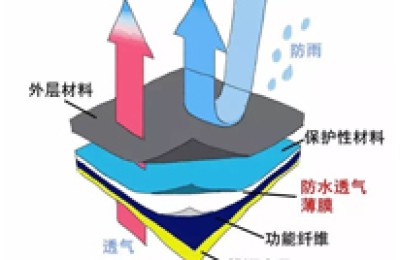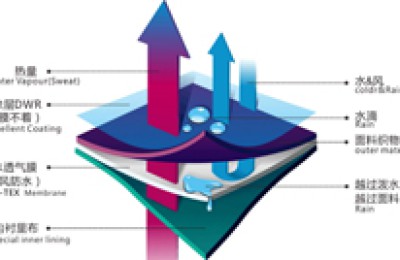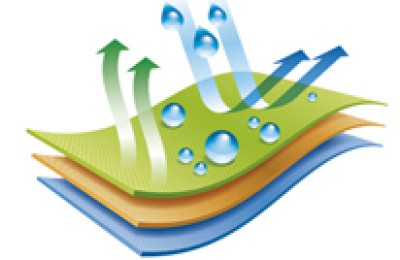Liu Na likes her current “job” very much: selling off-stock products for brand merchants.
Original price through her platform The 599 yuan Gap cotton jacket only costs 80 yuan; the 699 yuan Peacebird dress, with the label cut off, sells for 69.9 yuan… Liu Na’s job is to create a WeChat group and post product links and pictures. If someone places an order, she You will get the corresponding commission.
“I can earn about two to three thousand yuan a month.” Liu Na told reporters. The income is not high, but you can earn it easily, and the delivery and customer service are all completed by the platform.
According to data from the National Bureau of Statistics, from January to May this year, the total inventory of finished products in my country’s industrial enterprises reached 4.47 trillion, year-on-year. up 9%. Among these inventories, the total inventory of the clothing and textile industry reached 91.38 billion yuan and 165.69 billion yuan, both at high levels.
Epidemic? Shuffle? The apparel industry under heavy pressure
In the past six months, fast fashion brands such as Uniqlo, Zara, H&M, GAP, and La Chapelle have announced the closure of some stores. From capital enthusiasm to Stores are closed, stocks are on the verge of being wiped out, and the story of fast fashion is getting harder and harder to tell.
In the first quarter of 2020, La Chapelle achieved revenue of 1.002 billion yuan, a year-on-year decrease of 57.75%. , La Chapelle has experienced two consecutive years of performance decline. In 2019, there was a large-scale store closure and liquidation, with about 4,400 stores closed throughout the year. The large number of brands, difficult operations, difficulty in making profits in the main business, failed overseas acquisitions, defaults, debts and other financial pressures put La Chapelle in a delisting warning.
Coincidentally, the American fast fashion giant GAP has temporarily closed most of its stores around the world due to the epidemic, although 20% online income, but during the epidemic, most consumers have no desire to buy. With large-scale store closures, obstacles to online transformation, and stagnant revenue, GAP suffered a fatal blow.
The situation of H&M and Zara is also not optimistic. Affected by the epidemic, H&M’s sales dropped by 46% in March this year and 3,778 stores were closed. The 2019 annual report released by Zara also shows that 50% of the group’s stores worldwide are temporarily closed.
However, the epidemic is only the trigger for fast fashion to press the pause button.
At the end of June, Urban Beauty released a performance forecast stating that it expected a loss of no less than 120 million yuan in the first half of the year. Profit for the same period was RMB 35.5 million.
As a former leading Chinese women’s underwear company, its stock price is now only over 4 cents. According to the financial report, from 2016 to 2019, Urban Beauty’s inventory was 1.151 billion yuan, 1.112 billion yuan, 1.165 billion yuan, and 680 million yuan respectively, which has narrowed significantly. But the impact of this year’s “black swan” has dragged many brands back to the swamp.
Different years determine the discount for the last stock. Urban Beauty mentioned in the announcement that it is still cleaning up its inventory before 2017, and plans to sell these inventories by weight (about 0.5% off) to developing countries in Southeast Asia.
Similarly, high inventory will lead to losses, and this trend has been shown in the downstream textile market. According to data monitoring, the average inventory of weaving enterprises in Jiangsu and Zhejiang is currently as high as 44 days, which is 6 days higher than the highest of 38 days in 2018 and two days higher than the highest of 42 days in 2019. What is even more frightening is that now July has just begun.
Take the most common polyester taffeta on the market as an example. Because of its low cost, low threshold, relatively easy storage, and relatively large demand, when the market When there is a shortage of best-selling fabrics in the world, polyester taffeta has become a loss-stopping choice for many companies. Some time ago, news spread that some weaving companies used imported Tsudakoma looms to produce polyester taffeta.
This has caused the price of polyester taffeta to plummet. The current market price is less than 1 yuan/meter, and the machine rate has even become negative. Even at such a “loss-making price”, the inventory of most weaving companies still only rises but does not fall.
The market may not pick up until next year, the biggest enemy is time
The person in charge of a weaving company that specializes in four-way stretch textiles said that the current market situation is not good, but there are pros and cons, and the low raw material prices are unprecedented. In fact, everyone knows that the market will get better. As soon as the epidemic is controlled, orders will definitely rebound. By then, the prices of raw materials, cloth, and dyeing fees will definitely increase.
But it is not easy to wait for the market to pick up. In the International Textile Federation’s survey on the impact of the COVID-19 epidemic on members, affiliated companies and associations of the International Textile Federation, we can see that 20% of textile companies believe that it will take until the fourth quarter of 2020 to return to pre-crisis levels, and �23% and 21% will be recovered in the first and second quarters of 2021 respectively.
Even based on the most optimistic estimate and including the time for advance stocking, such a lackluster market will last at least three months, and before the market improves , to what extent the inventory will increase, and whether the capital chain can be maintained has become a huge challenge for textile companies.
Therefore, this earthquake, ignited by the epidemic, started with terminal brands and will also end with terminal brands. Many domestic midstream and upstream textile companies rely on orders from brands to survive. Production was hampered in the first quarter and orders dropped sharply in the second quarter. Currently, many textile companies have to cut back on food and clothing.
Terminal brands have taken away most of the profits of the industry chain. In theory, their ability to resist risks is stronger and they should protect the midstream and upper reaches of the industry. However, we see What we have seen is the collapse of one brand after another. Can the textile and apparel industry be saved? When will it bottom out and rebound? Who will turn the tide and help the building collapse… I am afraid we still have to place our hope on the recovery of terminal demand.
For textile companies, the biggest enemy is nothing else but time!
</p






